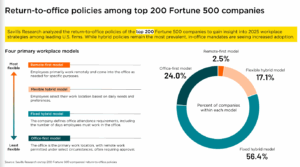Is Your Property Taxed at Its Correct Highest and Best Use?

Ad valorem property taxes reflect real estate value, and in most states, assessors value a subject property at market value based on its highest and best use.
Although assessors often assume the current use is highest and best, taxpayers who analyze their property’s usage may discover an opportunity to reduce their assessment by showing its optimal use has changed.
What is highest and best use?
Highest and best use is the “reasonably probable use of property that results in the highest value,” according to the Dictionary of Real Estate Appraisal, 6th Edition. Along with that definition, the publication includes four criteria the highest and best use must meet, requiring that the use be legally permissible, physically possible, financially feasible and maximally productive.
For property tax valuation, assessors, appraisers and property tax attorneys need to consider each factor in a highest-and-best-use analysis. For most properties, determining whether the current use is legally permissible or physically possible is easily ascertained by answering the question, “Can the property do what it is doing?”
Determining whether a use is financially feasible or maximally productive is trickier. Financial feasibility of the current use may be as simple as identifying whether the property generates a positive net operating income or if it would be cost prohibitive for the user to replace the space with an alternative property.
READ ALSO: 4 Ways to Improve Office Values
The analysis gets more complicated when trying to determine whether the use is maximally productive.
Take the example of an aging office building with declining occupancy. Should the owner invest money in building improvements with the goal of attracting more tenants or is it better to vacate the building and convert it to multifamily use?
In this example, the first option would require a discounted cash flow analysis that considers an extended period of renovations, tenant improvements, vacancy loss during lease-up and leasing commissions. In other words, the building would be valued as though it were stabilized at some point in the future, the costs associated with achieving stabilization would be deducted, and the future value and investment costs would be present valued to the valuation date.
Alternatively, the property could be valued like a new development with the projected use as multifamily. Whichever use has a greater value in today’s dollars is the winner, or maximally productive use, and therefore the highest and best use.
The tipping point
When does a property’s current use stop being its highest and best use? It could be when new development is in high demand, and buyers will pay more for the land alone than they will for the property with existing structures.
It could be when the property is losing tenants and accumulating significant vacancy. The market sees the building as less appealing and the remaining tenants start looking for more vibrant properties. Or it could be when the building is simply worn out and the cost to fix or restore it is greater than its value would be after repairs.
Every property will have its own unique set of circumstances to signal the practical end of its current use, but once a usage starts to tip, it seldom comes back. When the tipping point arrives, the highest and best use changes, and can have a profound impact on valuation.
Usage drives taxable valuation
When a property’s current use is no longer highest and best, the property tax valuation likely should change, too. While property tax assessments are generally based on the highest and best use, the mass appraisal techniques assessors employ to value properties are unlikely to incorporate highest and best use changes. The volume of properties assessors must value is simply too large to include individual highest and best use analyses.
As a result, it is up to taxpayers and their property tax counsel to identify when the highest and best use has changed and bring it to the assessor’s attention, either informally or through a property tax appeal. In preparing arguments for such a meeting, remember that valuations based on highest and best use require data reflecting the highest and best use.
For example, if an office building is no longer viable as an office, but rather its highest and best use is conversion for multifamily residences, then the comparable sales should comprise sales of buildings that are also facing a change to multifamily. Using sales of stabilized office buildings as comparable sales would result in improper valuation of the subject property hypothetically stabilized with office tenants, rather than pursuant to its actual highest and best use.
Commercial real estate markets are experiencing significant changes, straining many property operations and owner cash flows. As a result, it is critical to carefully analyze highest and best use when reviewing property tax assessments.
Timothy A. Rye is a litigator and shareholder at Minneapolis-based law firm Larkin Hoffman, the Minnesota member of American Property Tax Counsel, the national affiliation of property tax attorneys.
The post Is Your Property Taxed at Its Correct Highest and Best Use? appeared first on Commercial Property Executive.




